Ocean Signal RescueME, best PLB yet?
The Ocean Signal RescueMe PLB introduced this morning at METS is not just a little smaller than the competition; it’s purportedly 30% smaller in volume and that claim seems borne out by the photo. Size is important because the smaller a distress beacon is the more likely it is that the owner will have it with him or her when it’s actually needed. Of course when things go wrong a PLB has got to work well too, even if it’s years old, and the RescueMe also looks good in those terms…
RescueMe has a 7 year battery life and a 7 year warranty to match, plus a 66 channel GPS that’s probably very quick to cold start (the chips just get better and better) and a simple test routine. Ocean Signal, a relatively new but respected name in marine safety gear, also claims that its PLB is easily activated with one hand, which is nicely illustrated in a RescueME video put together by it’s U.S. distributor Datrex. Note though that the RescueMe is not yet approved by the FCC and therefore is not yet priced or available in the U.S.
Note too that the RescueMe does not float but it does come with a (somewhat bulky-looking) flotation lanyard and a “unique mounting clip” (that maybe Kees will check out today). Its antenna is definitely a first ever and clever-looking design; it appears as efficient and well protected as a tape measure but without a spring to fail. Well done, Ocean Signal!


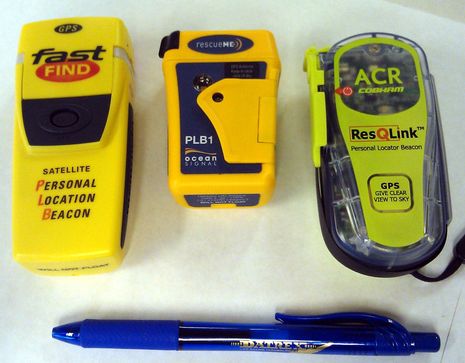
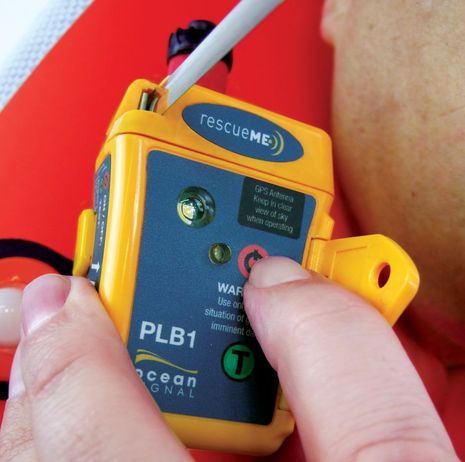
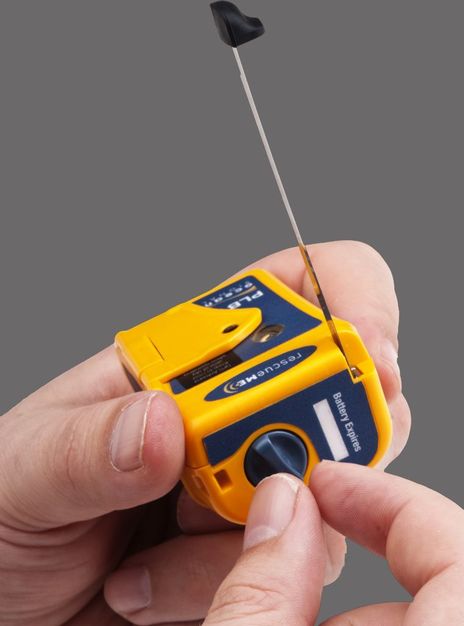
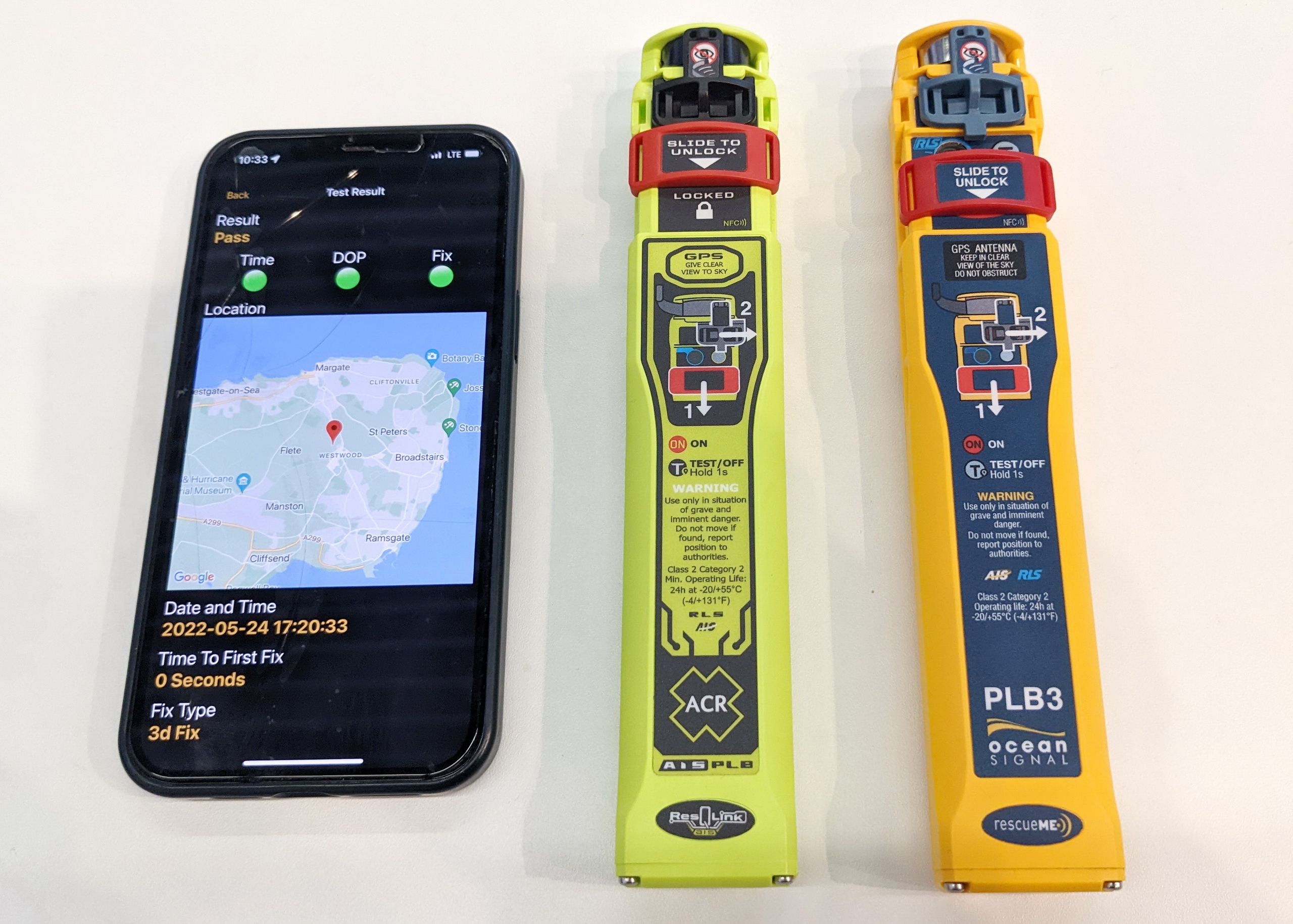
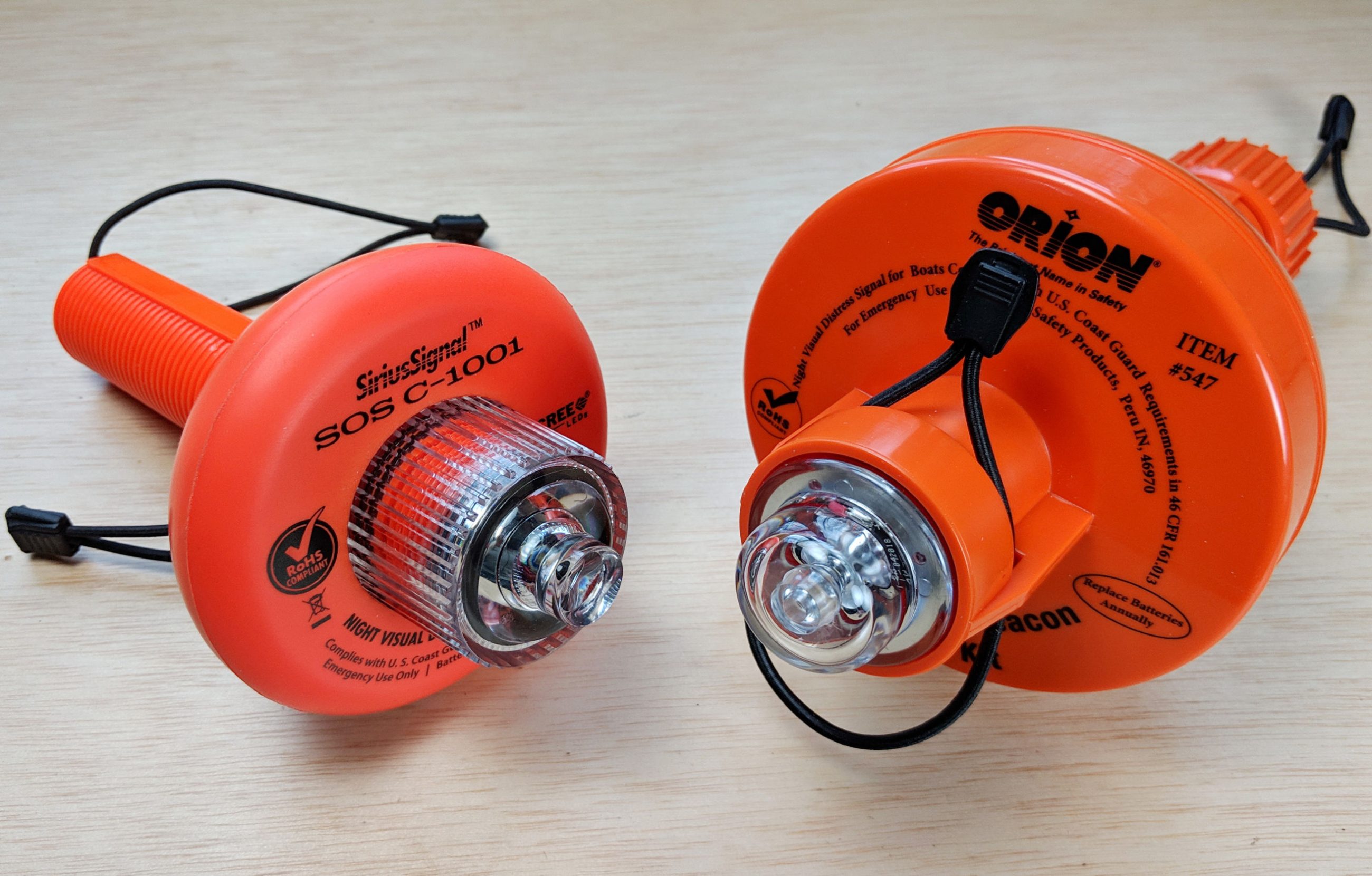
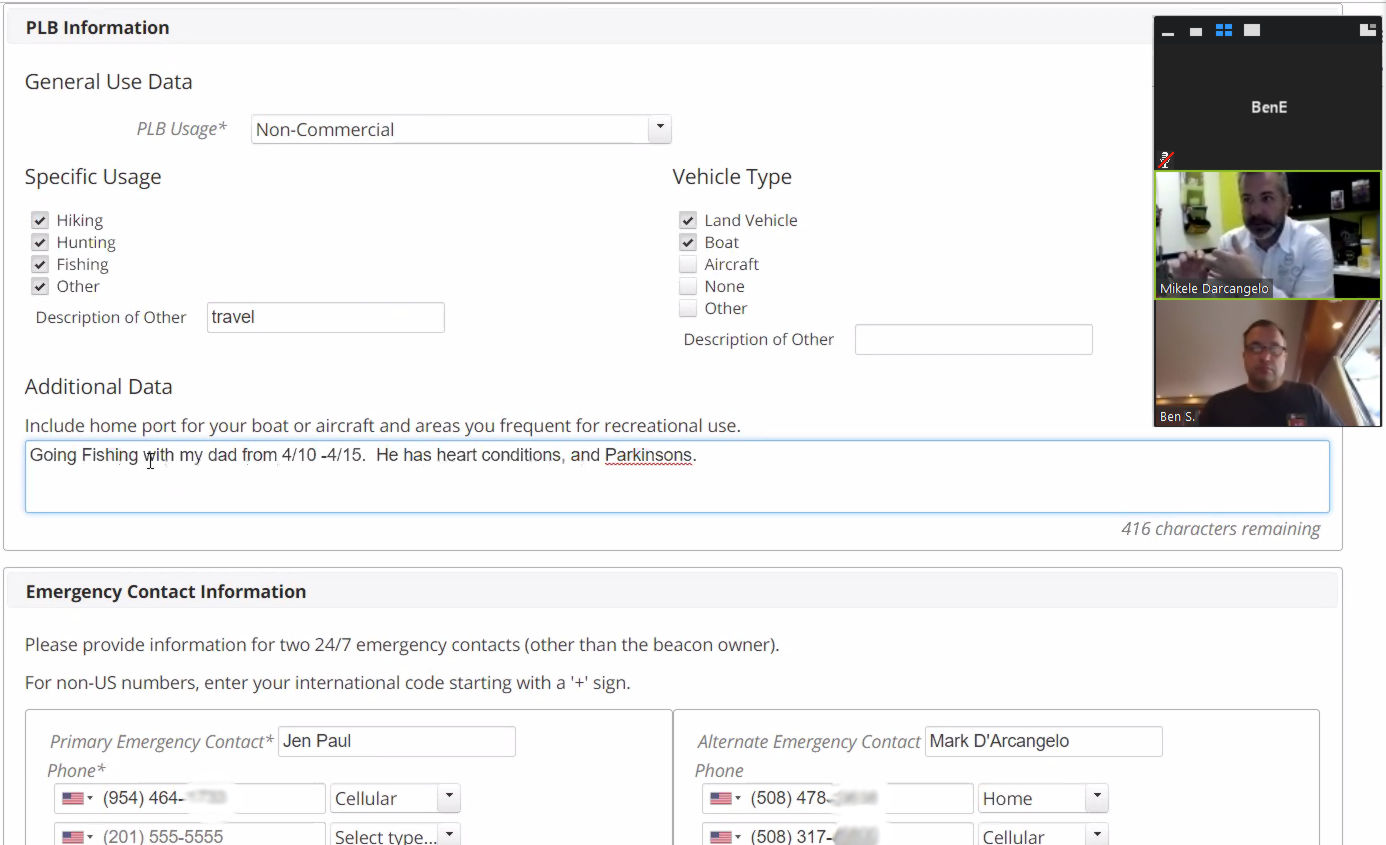









I would love to see a combo AIS sart and PLB all in one… maybe with PLB not set off immediately but with a delay of X amount of time to allow the person to be recovered by AIS if possible.
Looks real good, another 30% is a big deal.
1) I like the idea of a combo device with AIS SART.
2) Another big step would be to lose the antenna altogther. Why is it that a frequency has not been reserved for these products so they, just like cell phones, can function without external antenna’s?
Having looked at several AIS SARTS and especially The Kannard Marine ones, I think PLBS on water have little future, The best rescue asset is the one you just fell off of. AIS sarts are the way to go, PLBs are only really useful in a total melt down situation and in those cases we have GPIRBS
Dave
Beg to differ, Dave. I like AIS MOB devices too, but it’s not yet a totally proven technology. Plus PLBs serve as frugal EPIRBs on many boats and while I know EPIRBs are better I don’t think that carrying a PLB instead is a terribly dangerous safety compromise, especially for coastal vessels.
Anybody know what happened to the Satro PLB discussed last year? It too was significantly smaller and FCC approval pending. It has now dropped off the manufacturer’s web site. I really wanted one, maybe the RescueMe will meet a better fate?
Scott, I’d forgotten about that entry ( http://goo.gl/RM4L8 ) but thanks to Doug Ritter I found out that there’s litigation over the Satro involving the ex-ACR engineers who designed it:
http://www.equipped.org/blog/index.php?s=satro
I agree with Ben; PLBs definitely serve as frugal EPIRBs on many boats. In addition, they can be used when hiking, exploring remote areas, etc.
Raul
PLBs vs. EPIRBs?
PLBs operate the way that an EPIRB works. It gathers your GPS coordinates, and sends these coordinates through a 5 watt transmitter (same as EPIRB) to satellites, towers, or to close by (line of sight) vessels monitoring 121.5MHz.
U.S. Coast Guard aircraft are capable of locking onto a PLB 406MHz signal from, as far away as 150 miles out! (at 30,000 ft.)
The major difference between a PLB and EPIRB is the size of the unit, thus size of the battery. The EPIRB battery normally lasts 48 hrs. (plus or minus a few), and the PLB’s smaller battery will last 24 hrs. (plus or minus a few). If rescue cannot get to you within the 24 hrs., they will at least have a good idea of your location due to the tracking of the signals recieved.
In retrospect, you could say that the PLB may be the better choice on the water for the following reasons:
1. If your vessel capsizes (over 400 capsizes in U.S. a year) and the EPIRB is in a cat II. bracket, it is going to stay there. If it is positioned center of the vessel, such as a center console, and is released by a Cat.I hydrostatic realease unit (HRU), it will float straight up into the deck of the overturned vessel and remain there. Normally a boat will have the deck level, foam, then the hull. The chances that the EPIRB will transmit through these three levels is very slim to none.
The other issue with cat.1 EPIRBs is that it has to reach the hydrostatic depth to release. Many cat.1 EPIRBs are positioned on a vessel, whereas the release depth may not be reached causing the EPIRB to remain in the HRU. If the boat sinks and the EPIRB is snagged or not released, it will not transmit a signal above the surface.
2. The PLB has been proven many times over, and you can verify this by all the testimonies listed on the PLB manufacturers websites, ie. ACR, McMurdo, or Doug Ritter’s website, where he has tested and reviewed them.
If you encounter a sudden onset capsize or sinking, you could find yourself in the water with no active EPIRB for reasons mentioned above. Or lets say the EPIRB does deploy as advertised. The signal will bring searchers to the signal placed by the EPIRB, not you.
With my experience searching for PIWs (20 years USCG aviation), they are usually found several miles from where the vessel sank. So, if you are several miles away from the EPIRB, how does that help you? By having a PLB on your person, you are assured that searchers come to YOU and not to your EPIRB or sunken vessel, thus shortening your stay in the water.
Want complete reassurance? Place an EPIRB on your vessel and a PLB on your person. The reason I like this smaller and lighter PLB is that you can actually, pre-place it on your lifevest bladder so that it will be there and ready to use once you inflate the lifevest. You have an active signal because it is up and out of the water and has a clear line of sight to the sky.
The technology is there, use it. Don’t deminish the value because of the size. Remember how large the cell phones were when they first came out?
Happy to report that the RescueME PLB just got FCC approval and is available for suggested retail $369.
“A little higher than the rest with the premium justified by a smaller unit and 7 year battery.”
http://www.datrex.com/index/catalogdetail/pdt_id/1049
I honestly do not understand why you should have an PLB when you already have a GMDSS type of Epirb onboard. When somebody goes into the water, the mother vessel is the first and maybe the only vessel which is able to save him. With a PLB the mother ship simply does not know where the person is in the water. If you are lucky your PLB alarm will be received after 10-30 minutes. Then somebody has to take action. They will first check if you are really sailing just to make sure the alarm is not false. This all depends on the agency receiving the signals. This all takes time.
With a water temperature of between 7-17 degrees you will be “out” after 10 minutes. So the faster you find the person… the better. Like said, I think a PLB will not help you and is infact useless. In the Alpes ok but on the water/ocean, No.
We are selling the EasyRescue AIS-SART with Solas approval/FCC approval/BSH approval. It does not sink like the Kannad/McMurdo safelink AIS SART and the PLB mention above. In fact one of the rules to fullfill for a IMO qualified SOLAS AIS SART, is not to sink. One other rule is to operate 4 days at minus 20 Celcius. The EasyRescue fullfils all 38 rules and regulations and is alowed to be used as a replacement for a RADAR SART.
After 2 minutes max the AIS-SART will send out a position report, received by all ships including the mother vessel. The range depends greatly of antennea hight. Starting min. range is 8 miles. US coastguard plane at 20.000 ft ==> range 120 miles during test by the US coast guard. Range to a satellite is more then 350 miles (future). The alarm will be received by every one in the area. Compare that with a PLB. It simply does not make sense to use a PLB at sea to my opinion. (if you have an other opinion please let me know).
But our statement is:
“If you can’t find him/them, you can’t save him/them!”.
For more information see:
http://www.easyais.de/en/product_page.php?prodid=72
I mostly agree. If you are crewing on a boat in other than tropical waters and you are buying a PLB then you are most likely wasting your money because you will be unconscious and drowning at the moment that the alarm has been registered and forwarded to the MRCC responsible which is the time any rescue effort *begins*.
I also don’t understand why PLBs are such a big market but have this to add:
– if the PLB is registered with a maritime rescue service, then to my knowledge any alarm traced to a point on land (with a safety margin), is classified as “not our responsibility” by the MRCC responsible. So, barring special devices and services, it will not help you in the alps
– this is your only option if you are single handing with the possible exception of an autopilot control remote that makes boat tack or gybe when contact to the remote is lost
– you will probably survive long enough in tropical waters
– PLBs alarm a great many people with great reliability, just not anyone on the boat that the casualty just fell off and the same goes for locating. For several reasons, of which some will go away over time and some won’t, personal AIS SARTs alarm with far less reliability but quickly and boats in the immediate vicinity
– Because of the problems of both methods, you would really need both or some combination with a “life tag” type device that only alarms and only the own boat but with sufficient reliability or even all three
– because of this mix of problems, I decided to use handheld DSC VHFs (SH HX851 or Icom M92D). This will alarm very well, own boat, immediate vicinity and rescue services in range (those in a position to save you before you have drowned), and provide reliable locating and is compatible with many chart plotters and most PC software. Communication of the location of a DSC alarm from a fixed VHF radio to a chartplotter is defined under NMEA0183 (sentences DSC + DSE) and NMEA2000 (PGN 129808) and has fairly broad but not universal support. So make sure your device has support
– the disadvantage is that it’s heavy and bulky and needs frequent battery replacement and it doesn’t auto-alarm in case of an unconscious MOB. To address the battery replacement-part, I have ordered two each additional batteries and charging cradles to go with my two HX851’s. The whole set will have cost me as much or less than two PLBs
– an important benefit is that the location of the handheld VHF can be polled from the mother ship easily, if supported by the fixed radio, in normal use, without having to trigger an alarm of any kind
– you will also get all kinds of other uses of a handheld VHF with GPS thrown in at no extra charge, like giving you basic navigation when in your dinghy
It’s not nearly as cool looking as a PLB, so if that’s what you’re after, go for it. Just make sure you don’t fall overboard, though.
When deciding on whether to purchase a PLB or some other device, the intended use must be considered.
If you simply want a Man Over Board (device) to communicate with you own vessel, then there are several good solutions on the market. But these solutions will not necessarily summon help if you cannot communicate with the crew on your own vessel.
But if you really want to be rescued whatever the situation, then a PLB is simply a must for the smaller boat owner. A PLB is less expensive than an EPIRB, takes up less room to mount or can be easily carried in your clothing. The PLB will work anywhere in the world and when out of range of VHF-DSC stations.
The importance of a PLB is recognised by several organisations which mandate that all crew members carry a PLB, including offshore workers and some categories of race boats to name just a couple.
The Cospas-Sarsat infrastructure and communication with the rescue centres is second to none, giving confidence that your rescue alert will be actioned.
There are many good reasons for investing in a PLB, as many rescued survivors will testify.
I disagree they will have no place. Having been involved in marine rescue for 14 years, not once did I search for a person who fell off a boat. A sunk boat can’t search for it’s crew.
You keep your 8 mile range SART. I prefer to let the World know when I’m in distress. To those who keep bringing up the Mother Ship, IT SUNK!
Drowned before rescue? Try wearing a PFD.
PLB’s were originally designed for land use, so yes, they work on land too.
Dave: I am relieved to hear you never had to look for a person in the water who fell off a boat (a MOB) as this is a great fear of mine. Did you look for boats in distress, missing/overdue boats or people in a life raft? I think these are reasonably well served by traditional EPIRBs.
A COSPAS/SARSAT-based rescue requires time, probably at least 3 hours even in-shore, to get to the scene and then more time for the search. This is OK if you are on a boat in distress or in a life raft but not if you are in the water. A life vest will keep you afloat but at the latitude where I do my sailing, 54° North, I may not survive this long even in summer months. The rescuers that came for the Titanic had an easy time picking up all the dead bodies being held afloat by their life vests.
Knowing there is no perfect solution, I think
– that a boat should carry a liferaft and an EPIRB to keep the crew out of the water in case of a sinking and to allow the distressed boat or liferaft to alert outside help and be located
– that crewmembers should wear a life vest and have on them a means to alert the boat and allow the other crew on the boat to find them (also the crewmembers should be able to retrieve the MOB from the water).
A ship-mounted EPIRB will alert world-wide and provide a position with which to stage a major rescue effort. It can be used from the boat while it still floats or with a liferaft.
A personal AIS SART can be integrated in the life vest to automatically activate on inflation of the vest and it allows location from the boat or other shipping and alarming but both with only mediocre reliability. In my opinion, this is not mainly because of range but mostly because the right equipment must exist on the boat with the right software version and cabled/configured just so for it to work.
Life tag-type devices alarm with excellent reliability but don’t help with locating the MOB which I think is critical.
DSC VHF radios are restricted in their effectiveness because they are less likely to be worn and the battery may have run out. But they are very good at alarming. The incoming DSC alert alarm of my SH fixed radio will wake the dead and only the radio must be powered up – it always is. The locating needs a chart plotter but this can be powered up by the shipboard crew after being alarmed because the distress call will be repeated by the handheld and also the MOB position can be polled (3 key presses and one turning of the dial-knob on my SH fixed radio to get a red dot on the chart in Coastal Explorer). Compatibility can also be an issue but this relates only to the own ship and only to the locating. Outside alarming and locating is covered by the near-universal support for a DSC distress call with limitation for the lower range of the handheld radio.
A PLB alarms and provides a location with great reliability to authorities with access to vast resources for a major rescue but they are too far away to help you if you are in the water. Even the transmission of the alert takes unacceptably long if you are in the water. This is all quite acceptable if you are not in the water but then a traditional EPIRB will do that better than a PLB (in some circumstances a PLB may substitute for an EPIRB but I certainly wouldn’t advise to rely on it).
I don’t think a PLB is evil. When in an actual emergency, it can’t possibly hurt and only help. My problem with it is if it keeps people from buying and carrying any one of the other devices listed above and when a PLB in their pocket makes them think they are covered.
I have spent many nights in the cockpit this past year, most of the time more then 30 miles from land, and a PLB in my pocket would not have made me feel any safer.
My advice: Buy all of the stuff above but buy the PLB last. If you are single-handling, drop the Life Tag and probably the DSC handheld and get a PLB instead.
The Cheeki Rafiki disaster may be an example for situations where crew were unable to deploy a life raft in time. But it is also an example for a rescue taking too long for people in the water.
Randy: I don’t have an AIS SART for the reasons above. I have two DSC handheld radios in addition to a liferaft, an EPIRB and tackle to get a MOB back aboard.
PLBs do work on land but if they are registered so that the alarm ends up at a Maritime Rescue Coordination Center (MRCC) then they will not be able to help you. I don’t know details but if I were a mountain climber, I wouldn’t just buy a PLB from West Marine and let them register it.
I have read through most of these comments. I think a PLB is actually a great investment for the following reasons.
1. You can clip it on your person. So if you go overboard you have it on you. In emergency situations problems escalate quickly.
2. A cat 1 Epirb uses a hydrostatic release that releases after the pressure exceeds a certain amount, therefore the actual time your epirb will eject and activate is dependent upon how fast your vessel would sink, specifically your hydo getting to a certain depth/pressure. If it is in the bracket and underwater it will not be activated by the water activation feature due to the fact that the internal components in the brackets prevent this. After a certain depth it will release and go off.
The same thing with a Cat 2 in a bracket. The bracket keeps the epirb for going off. So when you get it wet washing the boat it does not transmit. Take it out of the bracket and it would go off.
This is all great, unless you hit something say a wave, container, log, your autopilot goes hard over at 25 knots–and you are off the vessel in the water.
A PLB puts out 121.5 homing signal. You can equpt. a vessel with a handheld wand like device to locate this signal. And although not on many vessels any more a fixed RDF, radio direction finder, can locate this signal. It is analog, however mush less power then the 406 transmission.
I am not a big fan of a seven year user battery replacement. This basically means your unit could be 14 years old and never had its transmission tested other then its self test function. I would recommend everyone to have a transmission test performed at a place that does this. I do this everyday often as a courtesy. My opinion is not financially driven!
3. You register a PLB to a person. You also list emergency contacts. You could easily list the MotherShip as a contact. Upon activation they would get a call from the authorities to ask what was going on ie “where is Bob? his PLB is going off”.
NOAA is extremely good and this is where you register a US programmed device. You can actually call them on the phone and a real live person answers!!! You are not limited to the details on the form. You can provide other information to them. If your a worry wart and only cross some dangerous waters so many times a year, i think they would allow you to tell them about your float plan. And of course if you were traveling with elderly, or people with medical conditions diabetic, someone with a pacemaker etc. They require your registration, and encourage anything to help them help you! If you have ever spoken to anyone who actually was/is a pilot involved in SAR, they will undoubtedly tell you most of there miles logged are for false alerts!! I had an older Pilot in my shop getting a battery replacement and it was great to hear his stories (Although he kept thinking he was boring me–which was not the case at all)
4. Cospas-Sarsat is proven. Many rescues are not done by the coast guard, military, helicopters etc. but are done by ANVER vessels coordinated by the coast guard. IE a ship near by gets a call saying–there is a PLB going off 5 miles from you, can you go assist? See the program here
http://www.amver.com/amverhistory.asp
5. Many people are not aware of how rescues happen. It’s a good thing most people have no experience with this! Here is a nice link to read some reports and see some maps about rescues that have taken place. This is the probably the most frequent question I get asked–curiosity as to what is gonna happen if I have to set this off.
http://www.nesdis.noaa.gov/sarsat_rescues_2014.html
I am a Eprib and PLB Battery Replacement Center for ACR Electronics in South Florida.
ACR also offers a service at an additional cost to test your PLB/EPIRB test transmissions.
Yes, when you perform a test your signal does go somewhere! The encoded and decoded message allows
the system to know it is a test and to not respond.
However, if you wanted to try it out, you can sign up and list a cell phone number or a bunch–there are different plans. This would basically send your cell phone a test message confirmation of sorts–showing/proving/ that your test message was received by the satellite, and was forwarded back to earth.
http://406link.com/
*****Remember testing your device does use battery power, so if you really are the kind a person who needs to know all the time–Make sure you look into how often the manufacture specifies testing–and that sort of stuff.
I am an ACR battery replacement center, located just a few blocks from ACR in South Florida.
Be Safe, Have Fun,
Mike
Good info Mike, we didn’t have AMVER set up during my CG flying days (C-130). We had to do an expanding square search to locate vessels to assist. And I probably have about 1000 + hours searching for false EPIRB signals.
Just to set the record straight on some of the posts; To say that a PLB signal on land will be ignored is ludicrous. In fact, the Ocean Signal RescueMe featured in this article was recently used to help a elderly man who fell (well inland) in New Zealand. Once a 406 signal is received, the closest search and rescue facility is contacted rather it be the Coast Guard or the local Sheriffs dept. Case in point, I had a PLB at a demo once. I didn’t have a dummy PLB to display so I placed a live PLB on the table (gulp). Later that night someone picked it up and activated it, not knowing it was live. Needless to say, the place was crawling with law enforcement and SAR teams. This was in the middle of Arizona! So I can personally say, yes they do respond inland.